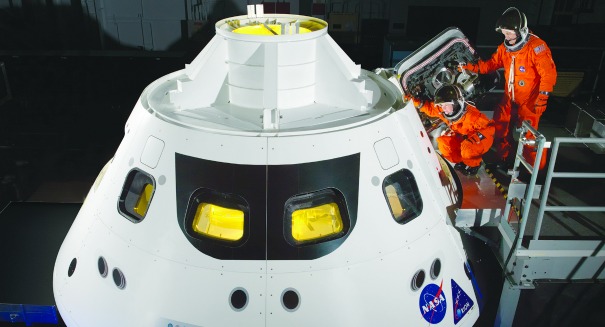-
Tips for becoming a good boxer - November 6, 2020
-
7 expert tips for making your hens night a memorable one - November 6, 2020
-
5 reasons to host your Christmas party on a cruise boat - November 6, 2020
-
What to do when you’re charged with a crime - November 6, 2020
-
Should you get one or multiple dogs? Here’s all you need to know - November 3, 2020
-
A Guide: How to Build Your Very Own Magic Mirror - February 14, 2019
-
Our Top Inspirational Baseball Stars - November 24, 2018
-
Five Tech Tools That Will Help You Turn Your Blog into a Business - November 24, 2018
-
How to Indulge on Vacation without Expanding Your Waist - November 9, 2018
-
5 Strategies for Businesses to Appeal to Today’s Increasingly Mobile-Crazed Customers - November 9, 2018
Orion parachute test success for NASA
For its latest Orion test run, NASA intended for the parachute system to fail partially in order to see how the spacecraft could handle being a bit shorthanded.
Advertisement
The representative capsule was dropped from an altitude of 35,000 feet in the skies above the U.S. Army Yuma Proving Ground in Yuma, Arizona.
During the most recent test, one of the two drogue parachutes was engineered to fail, as well one of the three main chutes.
One of the reasons why NASA went about testing a real-world model instead of a computer simulation is that Orion’s parachute performance is hard to model with computers explains CJ Johnson, project manager for Orion’s parachute system.
What if a manned space mission launch doesn’t go as planned and there astronauts are in danger?
NASA teams are evaluating Orion’s fate under multiple scenarios in case certain of the ships various parachute systems suffer partial deployment failures after the blistering high speed reentry into the Earth’s atmosphere.
That series before manned training, includes eight airdrops during a period of three years that puts the final design through very extreme conditions as a way to ensure that astronauts traveling in Orion will return home safe and sound.
This test is just one of a long series of tests on Earth of the functionality of Orion prior to it setting out into space on its missions. The first parachutes deploy when the crew module is traveling more than 300 miles per hour, and in a matter of minutes, the entire parachute system enables it to touch down in the ocean at about 20 miles per hour.
The parachutes operated flawlessly during the Orion EFT-1 mission.
This test, the riskiest the Orion capsule has so far been through, was meant to determine whether the spacecraft could still land safely even without all its parachutes fully operational. If it passes those tests, it will be qualified for crewed flights.
The Orion prototype, which features the same dimensions and weight as the original spacecraft, managed to pass the test, touching down onto the ground after a 6.5 mile drop through the atmosphere. It will blast off on the inaugural flight of NASA’s SLS heavy lift monster rocket concurrently under development – from Launch Complex 39-B at the Kennedy Space Center.
Advertisement
Stay tuned here for Ken’s continuing Earth and Planetary science and human spaceflight news. Ken has presented at numerous educational institutions, civic & religious organizations, museums and astronomy clubs.





























